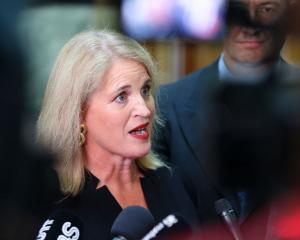Auckland and Sydney airports benefit from their strong positions in their respective cities, a new report says. Business editor Dene Mackenzie reviews the fortunes of the two listed airport companies.
Auckland Airport enjoys a wide economic advantage given its ownership of its namesake facility, as well as the large industrial, commercial and retail precinct surrounding it.
Sydney Airport enjoys strong competitive advantages stemming from its position as the only airport in Sydney capable of handling international aircraft.
The airport, under lease through to 2097, is Australia’s busiest.
Morningstar analyst Adam Fleck has reviewed both listed airport companies.
Wide-moat Auckland Airport’s 2018 financial year passenger movements met expectations, while narrow-moat Sydney Airport’s traffic performance for the first six months of the year was tracking Morningstar’s full calendar year forecast, he said.
Auckland’s year end was June, and Sydney’s was December.
The airports’ results tracked forecasts for slowing — though still robust — growth as airline capacity was added at a more modest rate.
For Auckland, international passenger numbers grew 4.7% in the financial year, trailing the 6% forecast and slowing meaningfully from 11% in 2017, Mr Fleck said.
Offsetting the fall in international passenger numbers, domestic travel growth remained solid at 7.7% against the 6% forecasts. Again, growth was below that of 2017.
Restated transit passenger figures following a data update from Immigration New Zealand added about 2% to consolidated figures, something to benefit the company in the future given the higher base for passenger landing fees.
"We forecast total passenger growth of about 3.5% annually over the next five years, led by 4% international gains."
At Sydney, both domestic and international passenger traffic growth slowed in the June quarter, he said.
Domestic movements rose 1.4% versus the previous corresponding period (pcp), compared with 2.9% in the March quarter.
Overseas passenger numbers grew 4%, slowing from 6.2%.
Year-to-date, domestic movements had increased 2.1%, tracking the full-year forecast. International traffic had risen 5.2%, ahead of the 4% projection, although Morningstar expected further near-term slowing, Mr Fleck said.
"Similar to Auckland Airport, we expect the rising middle class in China and new airline routes will drive above-population gain. We expect domestic passenger growth of about 2% and overseas traffic gains of nearly 4% annually through to the end of 2023."
Rising international growth at both airports was a core driver of further gains in high-margin, non-regulated retail revenue, he said.
In particular, travellers from China tended to spend more than other foreign tourists on duty-free and other retail options. Both Auckland and Sydney airports enjoyed continued solid gains from those passengers, he said.
For Auckland, passengers from China leapt 11% in the financial year, accelerating in the last six months. They remained a key element of the Morningstar forecasts for retail spending per international passenger to climb at a rate of 7% over the next five years.
Sydney’s Chinese passenger numbers had risen by a slimmer 5.1% in the year to date. However, Mr Fleck was encouraged gains improved to 11% versus the June pcp.
"We expect further acceleration for Sydney as movements to and from China grow at a high single-digit clip over the next five years."
The recently launched Virgin Australia route to Hong Kong from Sydney was evidence of the continued growth potential. The new leg added an incremental 200,000 seats of capacity — or 400,000 movements to and from Sydney — compared with the estimate of nearly two million passenger movements between Sydney and China, including Hong Kong, in calendar 2017. Morningstar forecast retail spending per international passenger would increase 3% a year, trailing Auckland due to the New Zealand airport’s ongoing expansion of its international terminal retail floor space.












